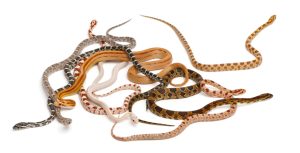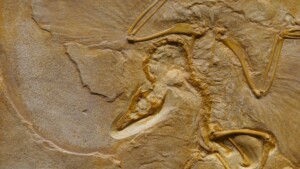Introduce Your Class to Inquiry Through Science and Engineering Practices
The Next Generation Science Standards ask that students be engaged in the same activities that scientists and engineers use to complete research, solve problems, and design solutions. Mastering those skills and activities takes practice, and a lot of it, but there are always opportunities for creative ways to engage students in sense-making using the SEPs.
This novel activity addresses the core idea of evolution. Depending on your approach to the activity, the Science and Engineering Practices (SEPs) that could be addressed include:
- Asking Questions and Defining Problems
- Developing and Using Models
- Planning and Carrying Out Investigations
- Analyzing and Interpreting Data
- Constructing Explanations/Designing Solutions
This inquiry activity directly addresses the Disciplinary Core Ideas of:
LS4: Biological Evolution: Unity and Diversity
- LS4.A: Evidence of Common Ancestry and Diversity
- LS4.B: Natural Selection
- LS4.C: Adaptation
Teacher Tip: This activity is best done during an evolution unit. Feel free to share basic information with your students or allow them to explore topics outside the classroom like whale body composition and ocean temperatures.
Students should be able to show that a whale without legs (baggie) retains more heat than a whale with legs (glove). Since the bag and glove are made of different materials, some students may tie the fingers of the gloves to show a whale without legs. It works best if the ocean (bucket) water is very cold (between 2–10° C) and the whale (glove/baggie) is about 37° C.
For Students
Purpose
In this lab, you will propose a reasonable hypothesis as to why whales do not have legs. You will then design and carry out an experiment to effectively test your hypothesis.
Rules
You may work in pairs ONLY. You will turn in one full lab report for each pair. You may not talk to other groups or ask the teacher any questions. You have one double period to design and carry out your experiment. If your data does not make sense, you should adjust your procedure. Please follow all guidelines to making a good lab experiment, including controlling variables and multiple trials.
Materials
- Container to Hold Water (bucket)
- 2 Latex Gloves
- 2 Small Resealable Plastic Bags
- 2 Thermometers (Celsius)
- Hot Water (from the sink)
- Cold Water (from the sink)
- Ice
Hypothesis
Why do whales not have legs? Write your hypothesis.
Procedure
Please write out every step clearly so that anyone—even your grandma—could repeat your lab!
Data
Be sure to record your data into a neat, understandable data table. You will turn in the original data.
Analysis
- Did your results support your hypothesis? Why or why not?
- If you could re-design your experiment (with additional materials), what would you do differently?
- Using vocabulary and concepts we have talked about in class, explain the evolution of whales from terrestrial mammals. You may have to think back to the beginning of the school year.
- Why do whales not have legs?
For the Teacher
Artifacts of Learning
- Formal lab report with original data table (not typed)
- A poster presentation of their findings so students can look at each other’s work and defend their results.
Conclusion
It will be your job as the teacher to ask the sense-making questions to get the students thinking about the question before them. Some samples include:
- How does the body shape of the whale differ from that of an animal with legs?
- What are some differences in the habitats of animals with and without legs?
- Why is or isn’t it necessary for whales to have legs?
- What types of variables will you be able to adjust in your experimental design?
- How will knowledge about changes in those variables help you conclude why whales do not have legs?
The more that you can pull from students prior to learning, the more they will learn as they start to hypothesize explanations to questions that they do not have the answers to. Working through the process with a fun activity like “Why Don’t Whales Have Legs” can help decrease stress when they get to a more complex topic such as photosynthesis.
Based on an article by Kate Silber, biology teacher at Highland Park High School in Highland Park, Illinois.







